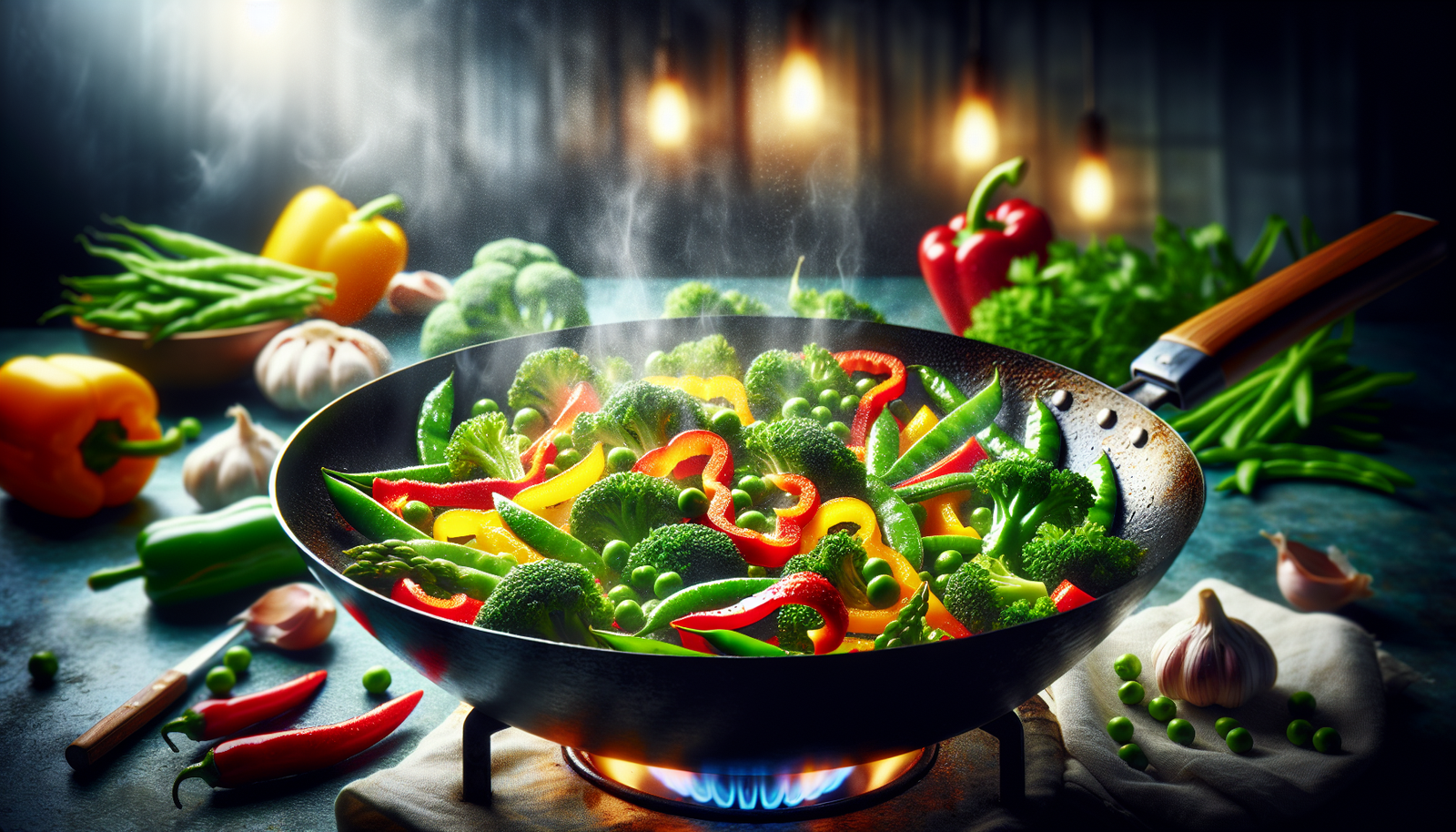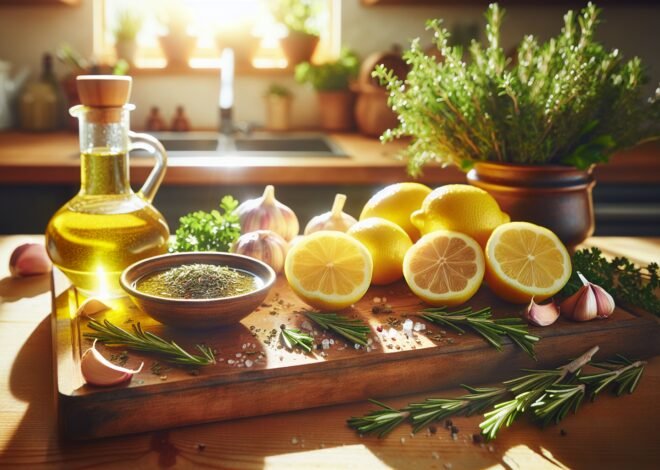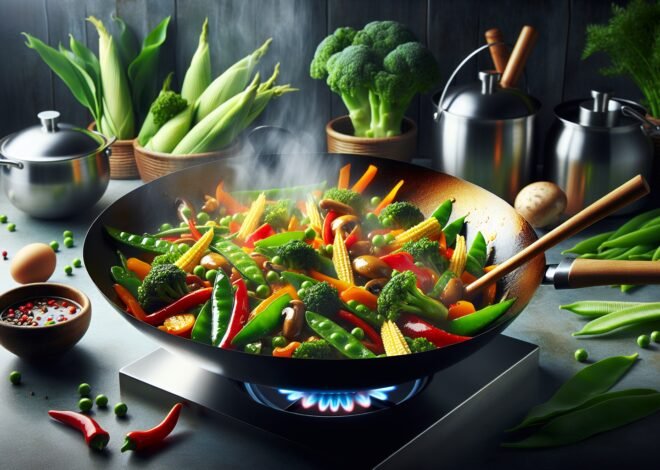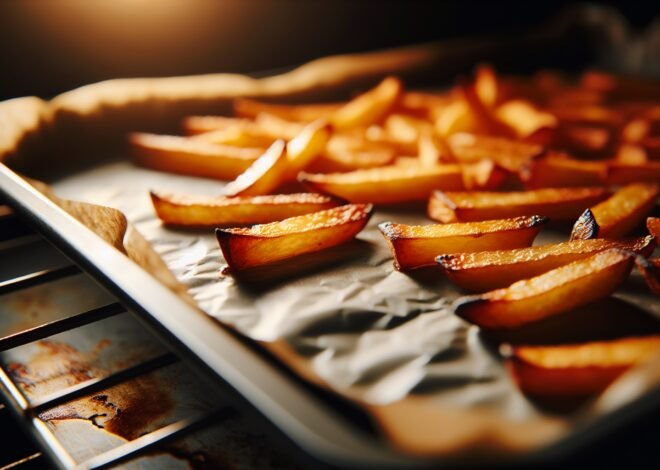
How to Achieve Perfectly Crisp Vegetables When Stir-Frying
Achieve crisp stir-fried vegetables without fail by mastering a few essential techniques. Stir-frying can transform a mundane mix of vegetables into a vibrant dish, yet many find it challenging to keep them crisp. This post will guide you through the critical steps for selecting, preparing, and cooking vegetables to perfection. From choosing the right oil with a high smoke point to controlling the heat and timing, each element plays a crucial role in ensuring your vegetables retain their crunch. Dive in and discover how to elevate your stir-frying skills for consistently delicious results.
“`html
Choosing the Right Vegetables for Stir-Frying
Stir-frying is a quick and healthy cooking method that requires careful selection of vegetables. The right vegetables can make all the difference in achieving that perfect crispness and flavor. This section will guide you through selecting the best vegetables, prepping them for maximum crunch, and avoiding common selection pitfalls.
Best Vegetables for Crisp Stir-Frying
Choosing vegetables known for their firm texture is key to a successful stir-fry. Opt for vegetables that can withstand high heat while maintaining their crunch. Look for:
- Bell Peppers: Their vibrant colors and sweet flavor add a delightful crunch.
- Broccoli: Known for its firm florets, broccoli holds up well under heat.
- Snap Peas: These add a satisfying crispiness and sweet undertone.
- Carrots: Thinly sliced carrots add color and a hint of sweetness.
- Asparagus: Perfect for a springtime stir-fry, offering both tenderness and crispness.
These vegetables not only provide texture but also enhance the overall flavor profile of the dish. Their robustness makes them ideal for quick, high-heat cooking methods.
Preparing Vegetables for Maximum Crispiness
Preparation is just as crucial as selection. Ensure vegetables are washed and dried thoroughly to prevent steaming instead of frying. Cut them uniformly to ensure even cooking. For optimal crispiness:
- Blanching: Quickly blanching broccoli and carrots can help maintain their color and crunch.
- Ice Bath: After blanching, submerge vegetables in an ice bath to halt cooking.
- Pat Dry: Remove excess moisture to prevent sogginess.
These steps help preserve the natural color and texture of the vegetables, ensuring each bite is crispy and flavorful.
Common Mistakes When Selecting Vegetables
Even the best cook can fall into common traps when selecting vegetables for stir-frying. Avoid these pitfalls to keep your stir-fry crisp and delicious:
- Choosing Water-Rich Vegetables: Avoid vegetables like zucchini and mushrooms that release too much water.
- Ignoring Seasonality: Select vegetables that are in season for the best flavor and texture.
- Inconsistent Sizes: Unevenly sized pieces cook at different rates, leading to undercooked or overcooked veggies.
Avoiding these mistakes ensures that your stir-fry retains its signature crunch and delivers a satisfying experience.
The Perfect Stir-Fry Cooking Technique
Mastering the stir-fry technique is essential to making a dish that’s both flavorful and texturally pleasing. It’s not just about throwing everything in the wok but understanding the nuances of heat, oil, and motion to achieve perfection.
Importance of High Heat for Stir-Frying
The hallmark of a great stir-fry is its ability to cook quickly while preserving texture. High heat is crucial for several reasons:
- Quick Cooking: High heat cooks the vegetables rapidly, keeping them crisp.
- Flavor Development: High temperatures caramelize sugars, enhancing flavor.
- Texture Retention: Extreme heat sears the vegetables, locking in moisture.
Ensure your wok or pan is preheated sufficiently before adding any ingredients. This prevents sticking and ensures even cooking.
Using the Right Oil for Stir-Frying
Not all oils are created equal. When choosing an oil for stir-frying, consider the smoke point and flavor:
- High Smoke Point Oils: Opt for oils like peanut, canola, or grapeseed oil that can withstand high temperatures without burning.
- Neutral Flavors: Choose oils that won’t overpower the dish.
These oils ensure the ingredients are cooked thoroughly without any burnt aftertaste, allowing the natural flavors of the vegetables to shine through.
How to Achieve the Perfect Stir-Fry Toss
The toss is more than a technique; it’s an art form that ensures even cooking and flavor distribution. Achieving the perfect toss involves:
- Wrist Action: Use a gentle flick of the wrist to keep ingredients moving.
- Timing: Toss frequently but not too often to maintain contact with the heat.
- Even Distribution: Ensure sauces and seasonings coat everything uniformly.
This technique helps maintain the integrity of the vegetables, ensuring every piece is perfectly cooked and coated with flavor.
Tips for Retaining Vegetable Texture and Flavor
Nothing can ruin a stir-fry faster than soggy vegetables. With the right tips, you can maintain both texture and flavor, ensuring your dish is always a hit.
Timing and Order of Vegetable Addition
Timing is everything in stir-frying. Adding vegetables in the correct order ensures each one cooks perfectly:
- Hard Vegetables First: Start with carrots and broccoli that require more time to soften.
- Medium-Soft Vegetables: Follow with bell peppers and snap peas.
- Soft Vegetables Last: Add leafy greens or tomatoes towards the end to prevent overcooking.
Following this order ensures each vegetable retains its natural texture and flavor, creating a perfectly balanced dish.
Proper Cutting Techniques for Stir-Fry Vegetables
Cutting techniques greatly impact cooking time and texture. For a successful stir-fry:
- Uniform Slices: Aim for even pieces to ensure consistent cooking.
- Diagonal Cuts: Maximize surface area for faster cooking and enhanced flavor absorption.
- Matchstick Sizes: Thin strips for hard vegetables like carrots help them cook quickly.
Well-prepared vegetables make all the difference, allowing each one to shine in the final dish.
Avoiding Overcrowding in the Wok
Overcrowding is a common mistake that leads to steaming rather than frying. Maintain an ideal cooking environment by:
- Small Batches: Cook in smaller quantities to ensure proper heat distribution.
- Ample Space: Leave space for tossing and turning vegetables freely.
- Patience: If cooking for a larger group, consider multiple rounds to avoid crowding.
These strategies help maintain high heat, ensuring each ingredient is cooked to crispy perfection, enhancing texture and taste.
“`
Conclusion
Achieving crisp stir-fried vegetables involves high heat and quick cooking. It is essential to cut vegetables uniformly for even cooking. Using a wok or a large skillet ensures proper heat distribution. Vegetables should be cooked in small batches to prevent steaming. Finally, adding a sauce at the end of cooking enhances flavor without making the vegetables soggy.
FAQ
What is the best way to keep vegetables crispy during stir-fry?
To keep vegetables crispy during stir-fry, use high heat and cook them quickly. This technique locks in their natural moisture while avoiding overcooking. Also, cut vegetables uniformly to ensure even cooking.
How can I prevent vegetables from becoming soggy in a stir-fry dish?
Prevent soggy vegetables by drying them thoroughly before cooking. Also, avoid overcrowding the pan, as this can steam the vegetables rather than fry them.
What preparation methods help achieve crispy stir-fry vegetables?
Blanching vegetables briefly in boiling water and then shocking them in ice water can help. This process firms up the texture, making them ready for a quick stir-fry.
Which vegetables remain crunchy after stir-frying?
Vegetables like bell peppers, sugar snap peas, and broccoli retain their crunchiness well. Their firm structure holds up under high heat, making them ideal for stir-fry dishes.
How does cooking time impact the crispiness of stir-fried vegetables?
Shorter cooking times help maintain the crispiness of vegetables. Prolonged exposure to heat breaks down their structure, leading to a softer texture.
What are the best techniques to ensure crunchy stir-fry vegetables?
Using a hot wok or skillet, cooking in small batches, and stirring constantly are key techniques. These methods allow vegetables to cook evenly and quickly without becoming mushy.











